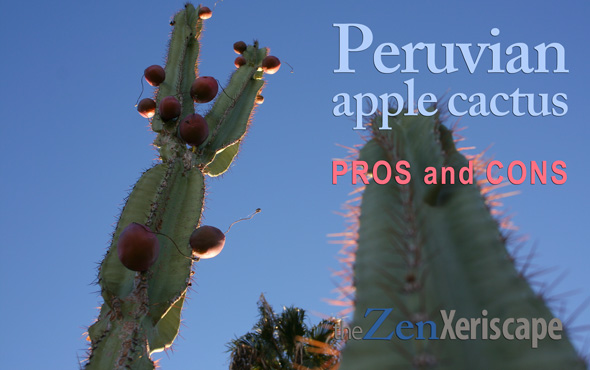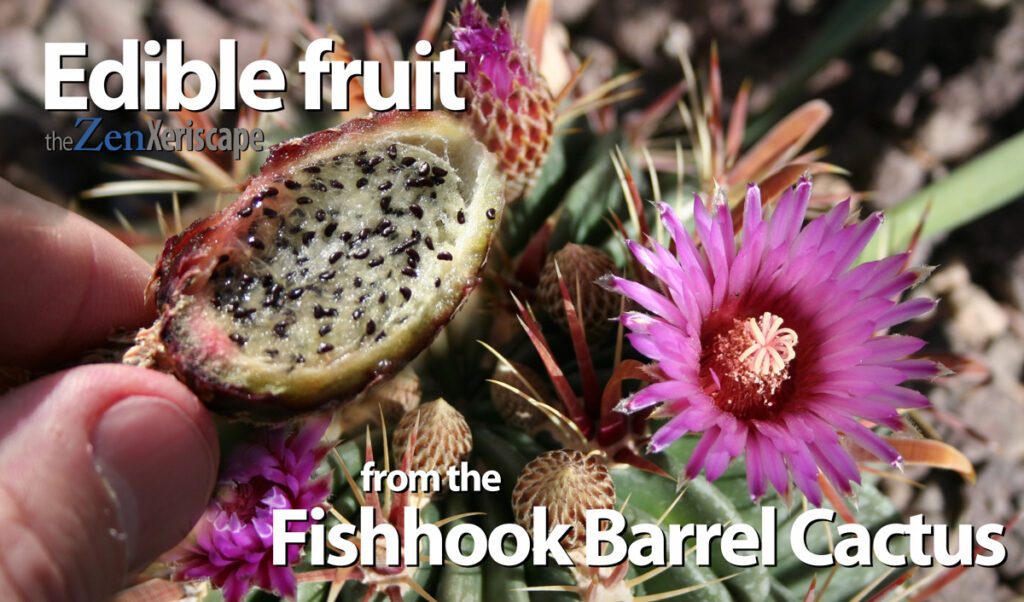
produces eye-catching purple flowers and tasty, edible fruit!
Photo by Doug Martin
Fishhook barrel cactus has edible fruit
Recently, my fishhook barrel cactus (Ferocactus latispinus) produced flowers, and from there, went on to bear fruit. And, besides having the beautiful fishhook spines and the pretty flowers to look at, this fishhook barrel cactus has edible fruit! And it tastes good, too!
What is the fishhook barrel cactus?
My slow-growing fishhook barrel cactus (Ferocactus latispinus) has sharp, but beautiful red spines. Also known as the devil’s tongue cactus, the ferocious-looking, red fishhook spine of the Ferocactus latispinus contrasts with its beautiful flowers and tasty fruit.
Even though they appear to grow slowly, my three fishhook barrel cacti have produced two cycles of flowers on its new growth in the past year.
Flowers in the summer from the fishhook barrel cactus
The first cycle of flower blooms happened around June. The purple flowers opened at the first sight of dawn, then closed as the sun disappeared in the west.
However, unlike the Peruvian apple cactus, whose flowers only last 24-hours, my fishhook barrel cacti have long-lived flowers. For the next two-or-three weeks, the fishhook barrel cactus flowers continued their cycle of opening their flower petals as the sun rose. Then, as the sun set in the west, their petals would fold together, as if to protect their pollen from nighttime invaders.
Finally, after the bees and other daylight pollinators did their jobs, the fishhook barrel cacti produced their tangy fruit. Inside is a tasty, yogurt-like pulp with hundreds of soft, tiny, protein-packed black seeds.
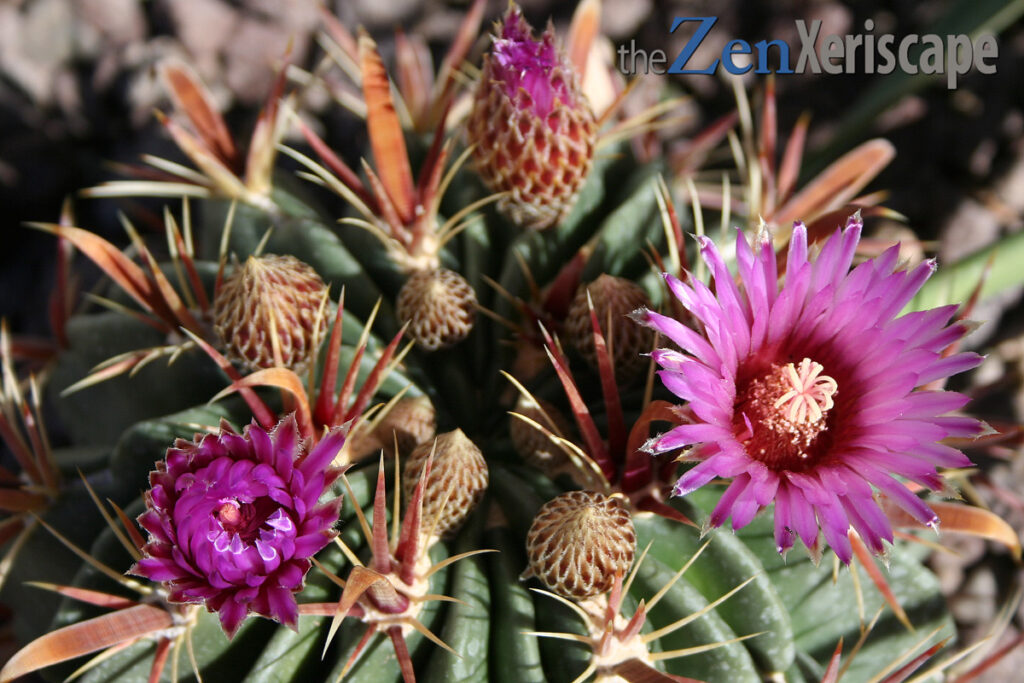
are a bright, eye-catching purple,
with red, blue, and warm-white hues.
Photo by Doug Martin
Summer and winter flowers
About six months later, in the winter months of December and January, the prolific Ferocactus latispinus again produced more flowers and fruits for me to enjoy. I was surprised, because even though our winters in Phoenix, Arizona, are pretty warm, I didn’t see any active bees pollinating the flowers during the day.
Somehow, though, a pollinator did its job while I wasn’t looking! The fruit developed slowly. Eventually, they swelled up with tiny black seeds and delicious pulp. The protective outer skin, or rind, changed from a yellow-green color to a ripe, burgundy red.
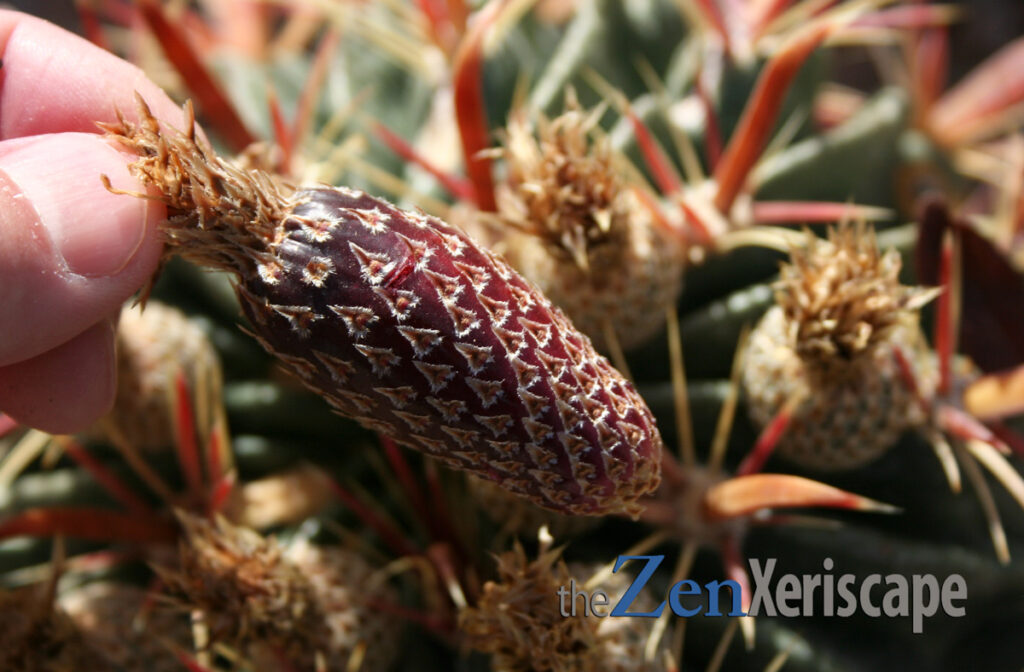
has a deep burgundy hue mixed with purples and warm reds.
Photo by Doug Martin
How does the fishhook barrel cactus fruit taste?
The burgundy-colored rind protected the fruit and delicate black seeds from predators. Even though the rind was only an 1/8th-of-an-inch thick, it was still firm—almost like the skin of a grape, but thicker.
After I cut the fruit in half, I saw how juicy and red the rind appeared. It was so tempting that I ate the rind along with the pulp.
The pulp tasted kind-of sweet, but not too sweet. Its texture reminded me of a healthy, fruit-filled yogurt. On the other hand, the rind was chewy, but juicy. It’s juice had a lime or lemon acid tang. When I ate both the pulp and the rind together, the contrasting flavors were unique and satisfying.
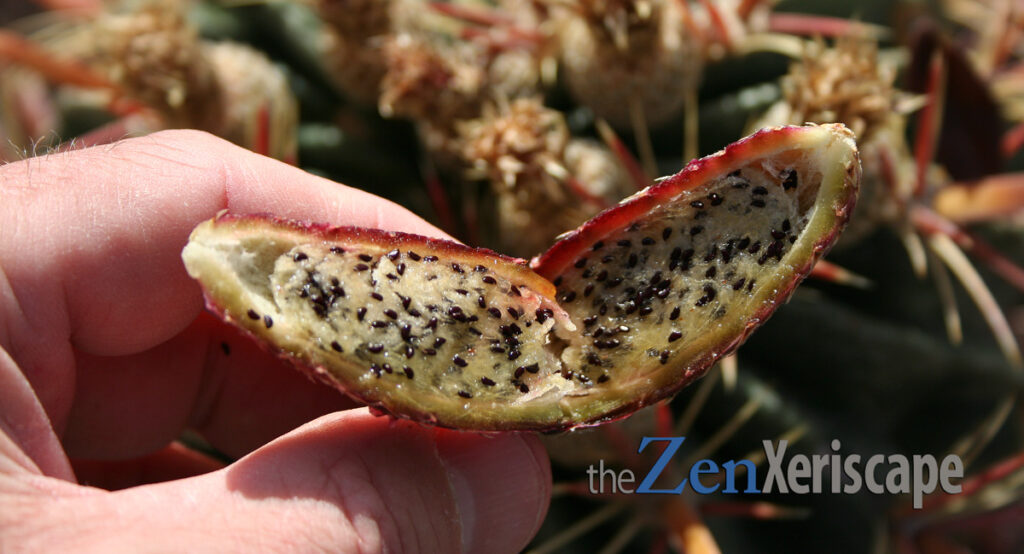
the succulent pulp which includes tiny black seeds.
Photo by Doug Martin
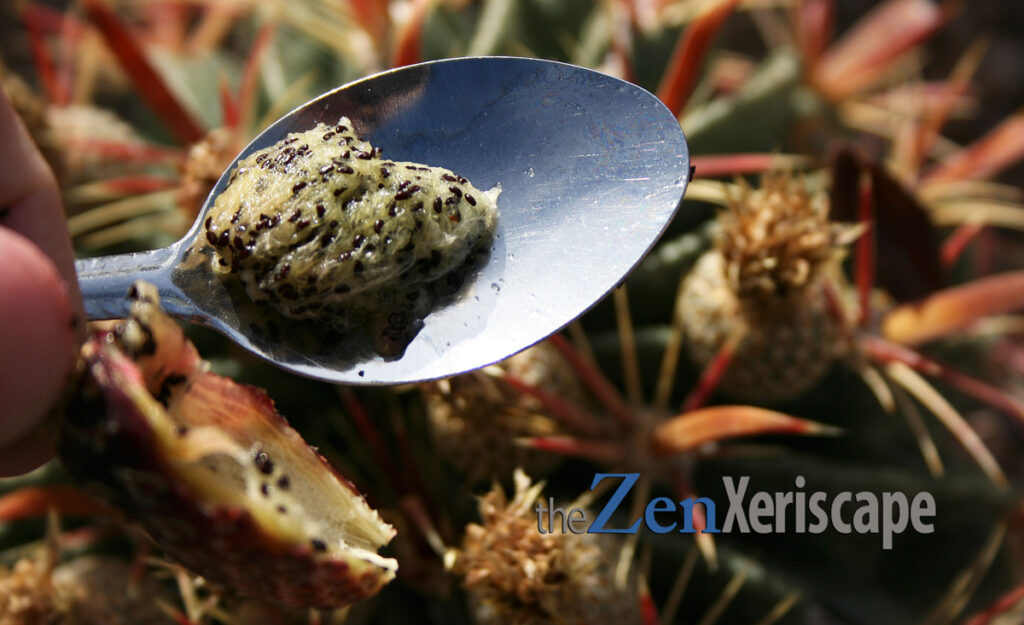
Scoop the pulp out with a spoon, or eat the rind and the pulp
just like you would eat any other fruit!
Photo by Doug Martin
No glochids on the fruit—just peach fuzz
While the fruit on my fishhook barrel cactus had tiny hairs, they appeared to be harmless. Believe me, before I took a bite out of the rind, I checked to see if the thin hairs might be glochids that might have stuck in my throat. Luckily, the glochid-like hairs reminded me of the harmless, fuzzy hairs on a peach.
Watch out for glochids if you eat any cactus fruit!
However, despite my good luck with the fishhook barrel cactus fruit, I will always check each cactus fruit for glochids before I eat them. The fruit I ate was not quite fully ripe. Maybe if I had let them completely ripen, the harmless fuzz might have turned into glochids.
Why am I so concerned about glochids?
In the past, I have eaten prickly pear pads. To get rid of all the spines and glochids, I dutifully cleaned them with a knife. Then, I washed the pads by hand. All the glochids were gone! That’s what I thought, anyway. After I cooked the juicy pad, I took a few bites. They tasted good and nutritious.
After a few seconds, though, I coughed and felt something irritating my esophagus. It wasn’t extremely painful, but it was irritating.
Thankfully, my digestive juices turned them into mush, and I was back to normal in a couple hours. But, I vowed to never come into contact with glochids again, especially in my mouth and throat area!
That is why I will check every single cactus fruit that I eat for those innocent-looking glochid spines.
TAKEAWAYS:
Fishhook barrel cactus has edible fruit
I love the taste of my red-hooked fishhook barrel cactus (Ferocactus latispinus) fruit. Its pulp has a unique, grape-like taste. Inside the ripe fruit, the hundreds of small black seeds are soft and go well with the pulp.
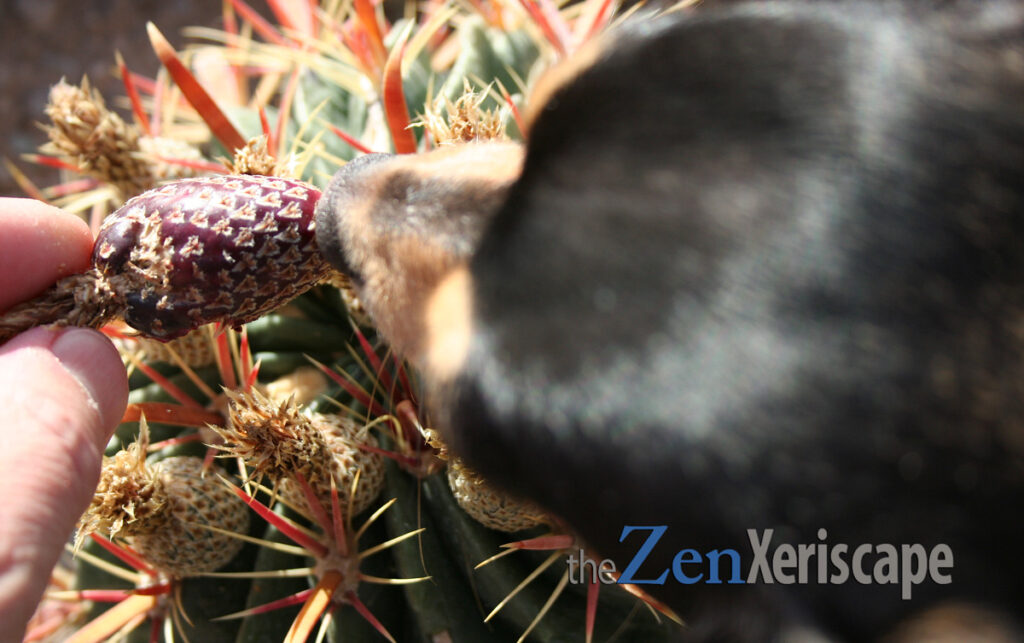
of the ripe fishhook barrel cactus fruit.
But, I didn’t give him any pulp to eat–
I was afraid he wouldn’t digest it well.
Photo by Doug Martin
Content and photos by Doug Martin and The Zen Xeriscape



